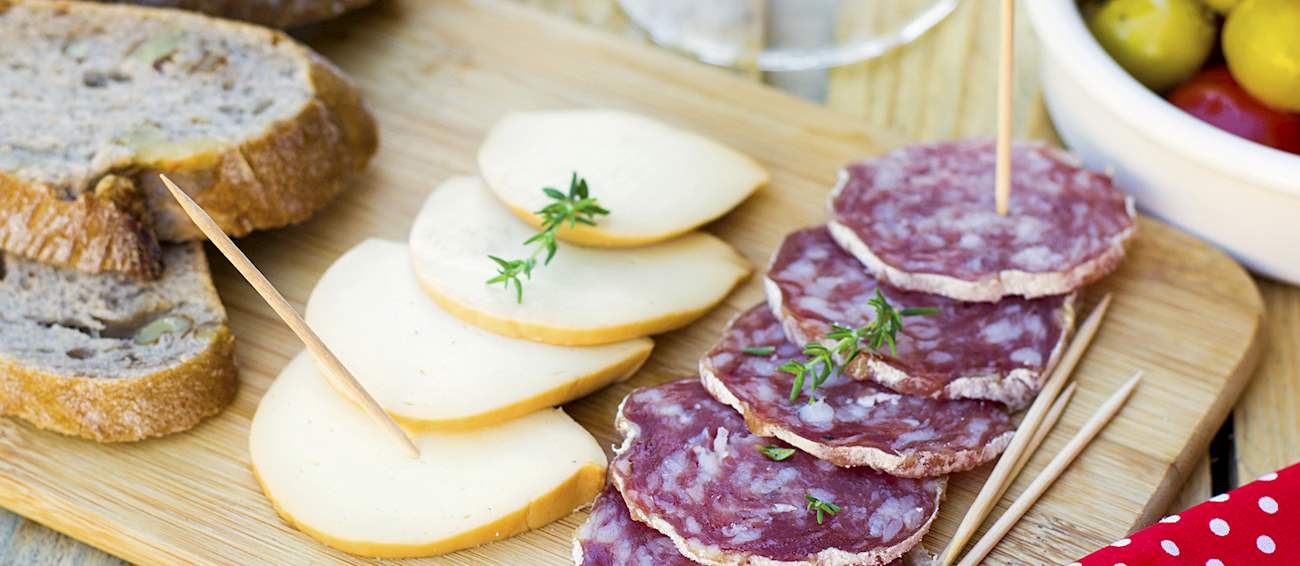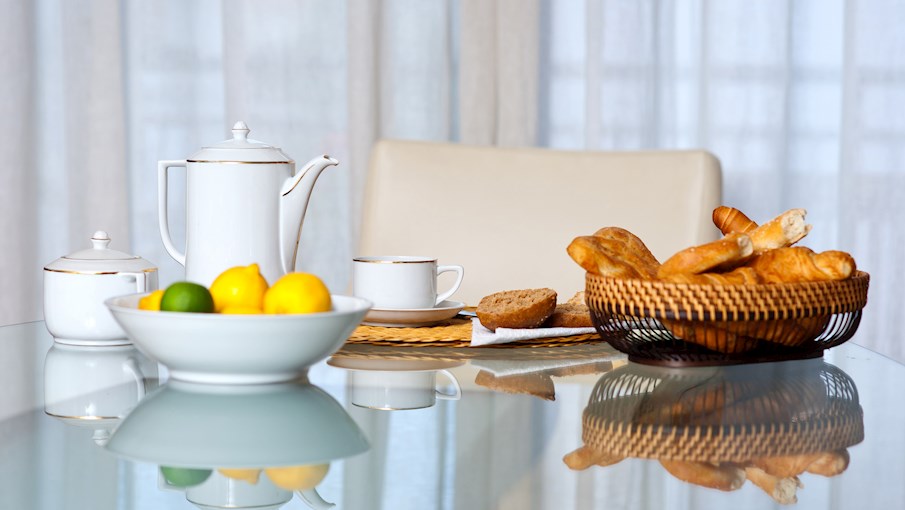High tea is an English tradition that's closely associated with the working classes of the 18th and 19th centuries, when famished factory workers used to arrive home late in the evening and eat bread, cheese, vegetables, a cup of tea, and sometimes meat.
Potatoes, crackers, and pies were also served as a part of high tea, but rarely. This type of meal was eaten at a table, while afternoon tea (or low tea) was enjoyed in low chairs or sofas, hence the possible nomenclature of these traditions. It should be noted that the afternoon tea that's nowadays served in the United Kingdom is often referred to as high tea in other parts of the world.
MOST ICONIC High Tea
View moreMAIN INGREDIENTS
Before every traditional Russian main meal, there are zakuski, a course of appetizers that are usually served to guests who are seated around the table, although a buffet arrangement is also quite common. For special events, there might be a dozen or two dozen zakuski served to the guests.
Typically, zakuski include appetizers such as cold cuts of meat, salads, pirozhki, cured fishes, pickled vegetables, a selection of cheeses, bread, and caviar. Zakuski is the most important course, and most hosts will spend much more time preparing and arranging zakuski than preparing the main course.
MOST ICONIC Zakuski
View moreAn epic and abundant Swedish buffet, smörgåsbord is a combination of two words: smörgås, an open sandwich, and bord, a table. The term refers to any all-you-can-eat buffet with self-service and a variety of pan-global food.
Popular in Sweden since the 18th century, smörgåsbord hosts a display of colorful, complex, and lavish foods and dishes such as herring, salmon, sliced cold cuts of meat, vegetables, breads, cheeses, wild berries, pastries, and jams. The dishes can be hot or cold and may range from appetizers to desserts.
Afternoon tea is an old British tradition of having tea between 3 and 5 o'clock in the afternoon, accompanied by sweet or savory tidbits of food. There are three types of afternoon tea: cream tea, paired with scones, jam, and cream; light tea, paired with scones and sweets; and full tea, paired with savories, scones, sweets, and a dessert.
It is said that the tradition was invented by Anna Maria Stanhope, the Duchess of Bedford, in the 19th century. She suffered from a "sinking feeling" in the afternoon, so she started having a pot of tea and a light snack privately in her boudoir.
VARIATIONS OF Afternoon tea
MOST ICONIC Afternoon tea
View moreMerienda is a typical late-afternoon light snack in Spain, consumed between 5:00 and 6:30 PM. It is especially important for children, so the meal can be anything from sweet breads, pastries, fruits, and yogurt, to savory sandwiches with cheese, chorizo, or ham.
Nobody is worried that the snacks will ruin the appetite for dinner because it usually isn't served for at least another 3 hours. The origin of the word merienda stems from the Latin word merenda, meaning to win, obtain, or deserve, referring to the fact that the snack is something special and a sort of a prize or a treat.
Although it is translated as cold buffet, Danish koldt bord is a traditional meal in which a variety of cold and warm dishes are served buffet-style. Danish tradition suggests that every buffet should have a serving of meat, cold cuts, seafood, cheese, bread, sandwiches, pickles, and desserts, but there are no strict rules concerning the choice of food.
Many luncheon restaurants include koldt bord as part of their regular service, and traditional Christmas or Easter lunch in Denmark is often served in a similar manner.
Ploughman's lunch is an English meal consisting of bread, cheese, and pickles, with the occasional addition of sliced ham. The meal is often served on a wooden board in many British pubs and bars. The name of the meal originates from the 1960s, when the Milk Marketing Board started promoting it throughout the country.
It is recommended to pair the meal with a glass of beer.
MOST ICONIC Ploughman's lunch
View moreBrettljause is a traditional appetizer course akin to a platter or charcuterie board that typically includes a variety of cold cuts, cheeses, pickled vegetables, and spreads served on a wooden board. It is particularly popular in rural regions and often served in wine taverns known as heurigers.
The exact composition can vary based on the region and individual preferences. Cold cuts might include speck (a type of smoked ham), various types of sausage, and sometimes even head cheese or liver pâté. Cheeses are usually local, depending on the region.
MAIN INGREDIENTS
Thorramatur is a selection of traditional Icelandic foods consumed predominantly during the Nordic month of Þorri, taking place from mid-January to mid-February each year. Cured fish and meat products are cut into slices or bite-sized pieces and served alongside rúgbrauð and butter on numerous buffet tables.
The standard choice includes specialties like fermented shark meat, smoked lamb, seared lamb head, blood sausages, and much more, all of which can be additionally soured according to personal preferences. Typical accompaniments include brennivín, Iceland's flavored spirit drink, and seasonal Þorri beer that is traditionally produced by local breweries specifically for the occasion.
Sju sorters kakor is a Swedish phrase that translates to seven kinds of cookies. It's a tradition deeply rooted in Swedish culture, particularly when it comes to coffee gatherings known as fika. The tradition goes back several generations when it was believed to be courteous and almost expected to offer at least seven types of cookies (among them drömmar, hallongrotta, brysselkex, etc.) when you had guests over for coffee.
Offering fewer might be perceived as impolite or an indication of not being well-prepared for guests. Today, while many might not strictly adhere to the rule of seven, the phrase remains a popular representation of Swedish hospitality. Over the years, the concept has expanded from cookies to cakes and pastries.
VARIATIONS OF Sju sorters kakor
TasteAtlas food rankings are based on the ratings of the TasteAtlas audience, with a series of mechanisms that recognize real users and that ignore bot, nationalist or local patriotic ratings, and give additional value to the ratings of users that the system recognizes as knowledgeable. For the “Top 11 European Assorted Small Dishes or Rituals” list until January 29, 2025, 1,091 ratings were recorded, of which 894 were recognized by the system as legitimate. TasteAtlas Rankings should not be seen as the final global conclusion about food. Their purpose is to promote excellent local foods, instill pride in traditional dishes, and arouse curiosity about dishes you haven’t tried.






